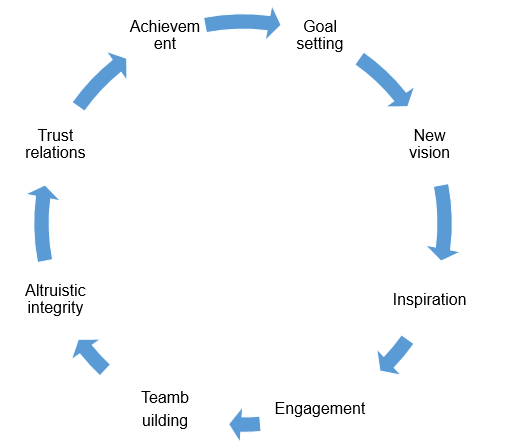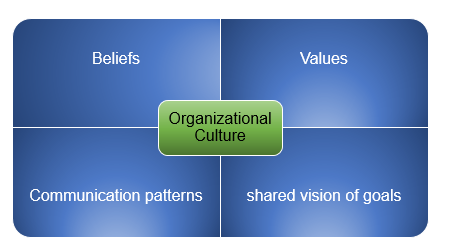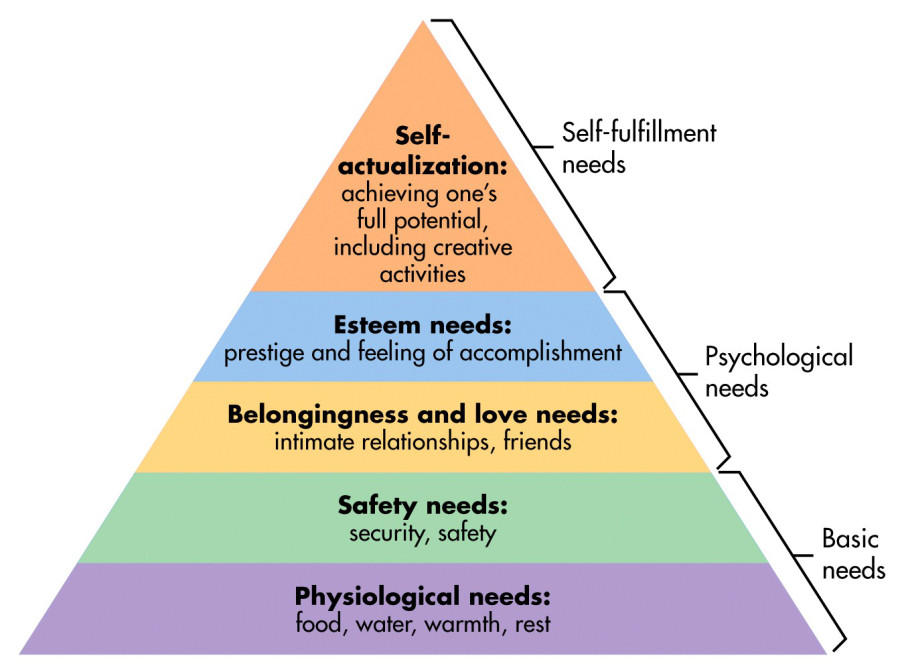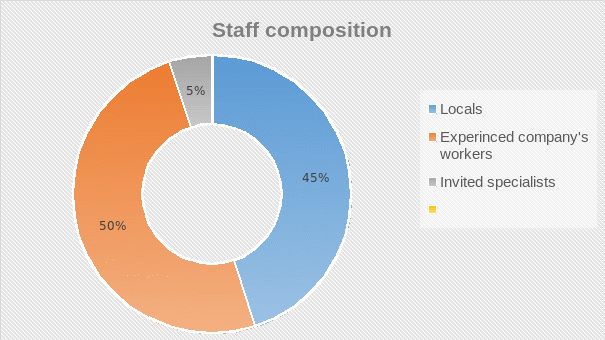Introduction
Management of an evolving company is a complex process that demands multiple competencies and skills from leaders responsible for the creation of an appropriate strategy, and its integration with the existing environment. The sophistication of the issue comes from the fact that elaboration of an effective approach demands consideration of many aspects that impact the work of the company and problems that might emerge in the course of its evolution.
For this reason, leaders, as individuals who organise the cooperation between all departments of the firm and its personnel, should be ready to analyse these aspects and introduce appropriate responses. Only under these conditions, the established goal can be achieved, and the basis for the future success created. The given paper is devoted to the analysis of the Juice ‘N’ Go case, the company’s decision to run internationally and problems associated with this change that might emerge in the spheres of leadership, individual differences, team dynamics and organisational factors.
Background
Juice ‘N’ Go is a successful company operating in North East Scotland. Being a young company that was established only three years ago, it already managed to attain success by attracting new customers and popularising the brand. The key factor promoting the positive outcomes is the unique selling point (USP) that includes the combination of fresh, locally grown fruit and Aberdeenshire spring water while creating their product.
It is a range of grown-up drinks oriented on the adult audience that looks for the alternative for alcohol beverages. The growing popularity of the brand resulted in its entrance to the UK market. Moreover, after opening its outlets in such big cities as Manchester, Liverpool and Newcastle, the overseas interest emerged. The fact is that other countries, especially those with a developed non-alcohol drinking culture, show their desire to cooperate with the brand. Regarding the perspectives of spreading to such locations as Canada, France, Australia, Hong Kong and Saudi Arabia, the company has accepted the decision to run internationally. For this reason, there is a need for the in-depth analysis of all possible problems associated with this growth. That is why organisational behaviour expert is invited.
Leadership Issues
One of the central tasks of the invited specialist is to assess the critical alterations in the sphere of leadership that will definitely emerge due to the radical reconsideration of the company’s functioning. According to the existing perspective on the evolution of companies, the given aspect is one of the pillars of successful transformation and creation of a new course that will help to generate benefits and contribute to the creation of a competitive advantage that can help to win the rivalry (Anderson 2016). At the same time, the role of leaders in creating a positive atmosphere and fostering change should also be regarded. It means that the given aspect becomes the first that should be altered to meet the new requirements that emerge due to the company’s new aim and attempts to conquer markets.
The first challenge that might emerge is related to the need for motivation and provision of a distinctive goal for this evolution. At the moment, the company is successful and popular with customers which helps to generate a stable income.
However, workers should be explained a need for further growth to avoid stagnation and decline. For this reason, the transformational leadership model can be suggested as an appropriate solution to this problem. The given approach presupposes that leaders work with teams to outline the needed areas of change and create a new vision to guide this very change together with members of a collective by inspiring them and emphasising benefits of a new position (Anderson 2018). It can be presented in the form of a cycle

The model will be the best possible solution for Abi Pearce as it is critical for her to improve the understanding of a new business venture to avoid failures and conflicts.
Another problem that can be associated with the reconsideration of the company’s functioning and its adherence to the new business model is the pernicious impact of the emerging challenges on the motivation of workers. At the same time, numerous claims about the effectiveness of the existing leadership model and leaders’ decisions might emerge. The given problem should be solved to prevent the deterioration of the atmosphere within a collective and preservation of the high level of commitment (Harrington 2018).
One of the possible approaches to avoid these problems is the motivational conversation with all team members. At the same time, the beneficial and rewarding character of the final success should be outlined (Black & Gregersen 2013). It will help to support high motivation levels and ensure that all workers will try to achieve the outlined goal and promote the further evolution of the company at the international level.
Another critical aspect of the company’s functioning that can suffer from the initiation of the change process is the atmosphere within the collective. The importance of the positive relations between all workers and their satisfaction with the current organisational culture and climate within a company is recognised by all researchers as one of the critical elements for guaranteeing positive results and the company’s rise. At the same time, drastic changes in the traditional approaches can confuse workers and deteriorate the existing atmosphere (Wild & Wild 2018). The leader’s central task is the monitoring of the current situation and the discovery of the first signs of growing problems.
The worsening of the atmosphere can be stopped by the use of additional training for workers focused on the cultivation of new experiences needed for them at the international level. At the same time, psychological support should be provided to employees who feel a certain crisis.
Finally, any leader becomes responsible for the explanation and observation of the new course created regarding the goals set by the international development of the company. One of the central challenges of the given aspect is the problematic restructuring of the company for it to be able to meet the new requirements and evolve (Luthans & Doh 2017). Thus, the success of a new course depends on all the factors mentioned above. It means that a leader should perform a critical assessment of the atmosphere within a collective, relations between workers, their motivation levels and preparedness (Luthans & Doh 2017).
This task can be performed by the engagement of the top managers and provision of a particular authority to trace the existing alterations and introduce appropriate responses. The collaborative approach can help to impact all critical elements of the given change and attain positive results. In such a way, a leader, as a central figure responsible for the change, should be ready to solve all these problems by acting strategically and selecting solutions that can be the most potent measures listed above.
Individual Issues
Another important domain that will be affected by the planned change is individual differences. Considering the fact that the company wants to acquire new customers from different countries, the emergence of these issues is inevitable. It can also be expected that multiple conflicts because of the critical differences in mentalities will appear. In this regard, the company should be ready to introduce appropriate strategies to eliminate the ground for the development of misunderstandings and discrepancies. A leader should also be responsible for the given task as he possesses the needed level of authority and can affect all spheres of the company (Project Management Institute 2013).
Regarding the planned change, the following issues can become topical: organisational and customers’ culture, clients’ behaviour, relations between members of a team, alignment of connection with locals, both customers and potential employees.
As it is stated above, the decision to run internationally might create the ground for the emergence of a number of problems related to the sphere of culture. The fact is that in accordance with the existing guidelines about the reorganisation of the company’s functioning and formation of the international structure, culture is the first element that should be changed (Bruke 2017). At the same time, one of the main problems is the poor organisational culture that does not promote the needed change and prevents employees from the engagement in efficient collaboration with locals and within the firm (Bruke 2017).
One of the possible solutions for the given problem is the introduction of the additional training focused on the detailed explanation of peculiarities of new cultures that will be met while running internationally and demonstration of the ways in which conflicts can be avoided.
The company might also face the problem related to customers’ behaviour and their preferences. The problem is that the firm and its staff know how to work with clients living in a particular area and having a familiar culture. In states, chosen for the expansion, other value system impacting individuals’ choices can present. It can constitute a serious problem because of the lack of experience needed to organise the effective work of client service and attain high attraction and satisfaction levels (Burrus 2017). The inability to succeed in the given sphere might undermine the company’s functioning.
For this reason, it is critical to perform the preliminary analysis of the customer behaviour peculiar to the area and assess paying capacity to establish appropriate prices. At the same time, it is essential to ensure that all workers will be able to work in the new working environment. For this reason, much attention should be devoted to the investigation of the ways how to meet the new demands of customers and ensure that they will remain satisfied.
Continuing investigation of the case and the planned expansion, the problem of individual differences as the related to the previous aspect should be mentioned. The fact is that the existence of various perspectives on the ways in which the company should interact with locals, the degree to which they should be engaged in its work, and integration with the local communities can become a critical challenge for the top management (Bruke 2017).
The degree to which people interact with each other and engage in effective collaboration is a fundamental factor for the functioning of any company and its international development. Cultural differences are traditionally recognised as one of the barriers preventing corporations from further growth (Coleman & Thomas 2017). For this reason, the leaders should be ready to engage in activities to improve the team spirit and create the environment beneficial for the cooperation between various individuals.
The last problem that can be related to the individual sphere is the potentially complex contacts and cooperation with locals. There are several factors that can be considered barriers preventing the staff of the company from work with specialists coming from the region. The existing approach to the management of international organisations recommends inclusion of people living in the area in the functioning of a firm that is going to enter this market (Coleman & Thomas 2017).
It will help to generate several benefits such as the enhanced understanding of how it works, clients’ preferences, and values they appreciate in products. In such a way, the improved cooperation with locals becomes critical. The possible method of how it can be aligned includes specific meetings to avoid misunderstandings and communication patterns that can help to eliminate the conflict and integrate new workers with the functioning of local departments.
Team Issues
The sphere teamwork and collaboration is another critical element that should be considered by the company’s leaders to achieve success and facilitate the company’s further rise. The fact is that the radical reconsideration of the company’s functioning planned for the international growth will apparently impact teams. These units differ from simple groups of people as they possess an improved understanding of the current goals and try to pursue them to attain success. In such a way, they can be considered the main moving force of the corporation and the deterioration of their functioning can undermine the wealth of the firm and promote the failure of the project. In this regard, it becomes critical to monitor the state of teams to avoid the emergence of problems, ensue the preservation of the positive atmosphere.
The first element of the functioning of teams is the necessity to establish clear goals. As it has already been stated, the work of this formations to a greater degree depends on their members understanding of the current company’s position and the central cause of particular actions performed at the moment (Coleman & Thomas 2017). The decision to run internationally might confuse individuals and destroy the current image of the company’s future. In this regard, it becomes critical to avoid deterioration of teams functioning by communicating with them and explaining actions they should perform to achieve success and contribute to the success of the current mission (Sweeney & McFarlin 2014). It can also be performed via brainstorming for every team member to outline his/her position regarding the would-be change, show areas that are not clear and discuss them with colleagues. It will help to significantly minimise the threat of complications and a decrease in the effectiveness.
Organisational culture remains another field that can be affected by the reconsideration of the company’s functioning and its becoming an international corporation. The given term can be determined as the combination of existing beliefs, values, shared vision, and ways of interacting that are created to align the improved cooperation between all employees and achieve a certain goal (Coyle 2018).

Any change affects this aspect as there is a need for the introduction of new patterns effective regarding the new environment. As for the case, the international development of the company demands the inclusion of the enhanced comprehension of internationalism and the necessity to shift to new ways of cooperation characterised by mutual respect. Moreover, teams should be prepared for the appearance of new members from the local communities who should be assisted in their integration with the existing models to achieve the best possible results (Cummings & Worley 2014). Only under these conditions, critical problems can be avoided.
Motivation is another fundamental factor that should be assessed during any change process as is the central cause of success or failures. It is the workers’ desire to engage in a particular activity and perform it with the high efficiency because of the possible benefits that can be acquired. In other words, employees can be effective only if there is a clear understanding of rewards that can be acquired. The main leader’s task is to motivate workers by outlining all possible benefits awaiting them at the end of the change process (Ng 2018).
At the same time, it is critical to achieve the high levels of intrinsic motivation which means that not only possible rewards can attract workers; however, they should have the inner motifs to engage in the process as it will help them to satisfy higher levels needs. In accordance with the Maslow’s hierarchy, only if basic physiological and safety needs are satisfied, a person can feel the desire to work for self-development (Deresky 2018).

That is why it is important to ensure that all employees’ low-level needs are fulfilled.
Finally, common, or shared vision is another significant aspect that should be considered while speaking about teams regarding the change. The key factor impacting the degree to which collaboration between individuals becomes successful is how they understand the future of the company and the way it can be achieved. Juice ‘N’ Go wants to enter Saudi Arabia, France, Australia and Hong Kong’s markets to generate additional benefit; however, it also wants to preserve its unique nature. This vision should become central for all employees and cultivated among the staff members to achieve the goal and avoid complications because of the differences in perspectives on the future of the company.
Organisational Issues
Finally, organisational factors should be considered as critical elements that precondition the success of the change and Juice ‘N’ Go becoming popular in counties selected for the expansion. This domain includes the creation of the appropriate organisational structure, effective staffing, and coordination between departments. Only if these elements are considered during the change, and there is an effective strategy on how to incorporate all these elements, the success of the company’s restructuring can be expected.
First of all, the appropriate structure is critical for international companies. It includes both introduction of new departments responsible for new countries and monitoring of the situation in them, the establishment of the appropriate hierarchy to guarantee effective subordination and tasks’ accomplishment, and delegation. All these aspects are related to the sphere of human resources management and relations (Ehrhart 2013). The strict hierarchy is needed because of the increased number of various departments and workers functioning in distant areas. The following model of subordination can be suggested:

It will help to ensure the fast understanding of all orders and incentives and avoid problems related to the poor understanding of the needed alterations in different locations. This factor also preconditions the need for delegation as the most talented employees should be provided with managerial positions to monitor the functioning of their assets. Using this model, they will be able to lead their subordinates and achieve better results.
Personnel selection should also be considered. It is apparent that any change and growth presupposes a significant increase in the number of employees. It means that new specialists should be hired. This process should be given attention as the lack of professionalism among staff has a pernicious impact on outcomes (Schein 2016). Regarding the planned change, it can be recommended to find new workers among locals to integrate with the local communities. Moreover, they will possess an improved understanding of customers’ peculiarities and contribute to better outcomes. It can also be recommended to hire additional specialists with the experience in international transformation (Ehrhart 2013). As a result, the following composition can be observed:

In such a way, it the combination of experienced workers with new local specialists and experienced employees becomes fundamental for the company. In the course of the development, the present of employees from the selected states will grow because of their improved understanding of the company’s functioning and ability to perform all critical functions.
Finally, the coordination between all assets and departments should be aligned as it is one of the critical challenges that international corporations face. The lack of means of communication and sharing data can significantly slow down the speed of Juice ‘N’ Go’s development and result in poor outcomes. For this reason, the project management should include the focus on means of communication that contribute to the achievement of the desired goals and creation of the atmosphere appropriate for the planned entrance (Friedman 2015). Innovative technologies along with the improved communication patterns can be used to attain success in the given sphere and avoid problems.
Conclusion
Altogether, reconsideration of the company’s functioning can be considered a complex process that demands significant effort. Speaking about Juice ‘N’ Go case, it becomes critical to devote attention to such aspects of the company’s functioning as teams functioning, individual differences, leadership and organisational structure as they become central for the overall success of the new venture and precondition the successful transformation from the local to an international brand.
Reference List
Anderson, D 2016, Organization development: the process of leading organizational change, 4th edn, SAGE Publications, Boca Raton, FL.
Anderson, D 2018, Organization design: creating strategic & agile organizations, SAGE Publications, New York, NY.
Black, S & Gregersen, H 2013, It starts with one: changing individuals changes organizations, 3rd edn, Pearson FT Press, Upper Saddle River, NJ.
Bruke, W 2017, Organization change: theory and practice, 15th edn, SAGE Publications, Boca Raton, FL.
Burrus, D 2017, The anticipatory organization: turn disruption and change into opportunity and advantage, Greenleaf Book Group Press, New York, NY.
Coleman, S & Thomas, B 2017, Organizational change explained: case studies on transformational change in organizations, Kogan Page, London.
Coyle, D 2018, The culture code: the secrets of highly successful groups, Bantam, New York, NY.
Cummings, T & Worley, C 2014, Organization development and change,10th edn, Cengage Learning, Thousand Oaks, CA.
Deresky, H 2018, International management, 9th edn, Pearson India, Delhi.
Ehrhart, M 2013, Organizational climate and culture, Routledge, London.
Friedman, R 2015, The best place to work: the art and science of creating an extraordinary workplace, TarcherPerigee, New York, NY.
Harrington, J 2018, Innovative change management (ICM): preparing your organization for the new innovative culture, Productivity Press, New York, NY.
Luthans, F & Doh, J 2017, International management: culture, strategy, and behavior, 10th edn, McGraw-Hill Education, London.
McLeod, S 2018, Maslow’s hierarchy of needs. Web.
Ng, SM 2018, Organization design: reorganize your department or company to improve performance: step-by-step, Independently published, New York, NY.
Project Management Institute 2013, Managing change in organizations: a practice guide, Project Management Institute, Philadelphia, PA.
Schein, E 2016, Organizational culture and leadership, 5th edn, Wiley, New York, NY.
Sweeney, P & McFarlin, D 2014, International management: strategic opportunities and cultural challenges, 5th edn, Routledge, London.
Wild, J & Wild, K 2018, International business: the challenges of globalization, 9th edn, Pearson, New York, NY.